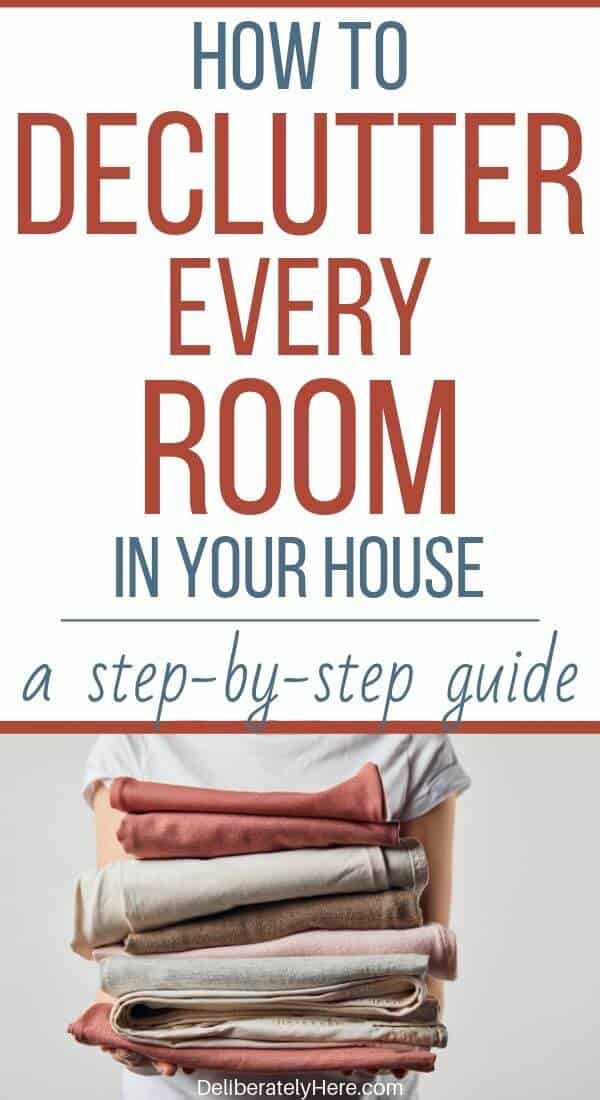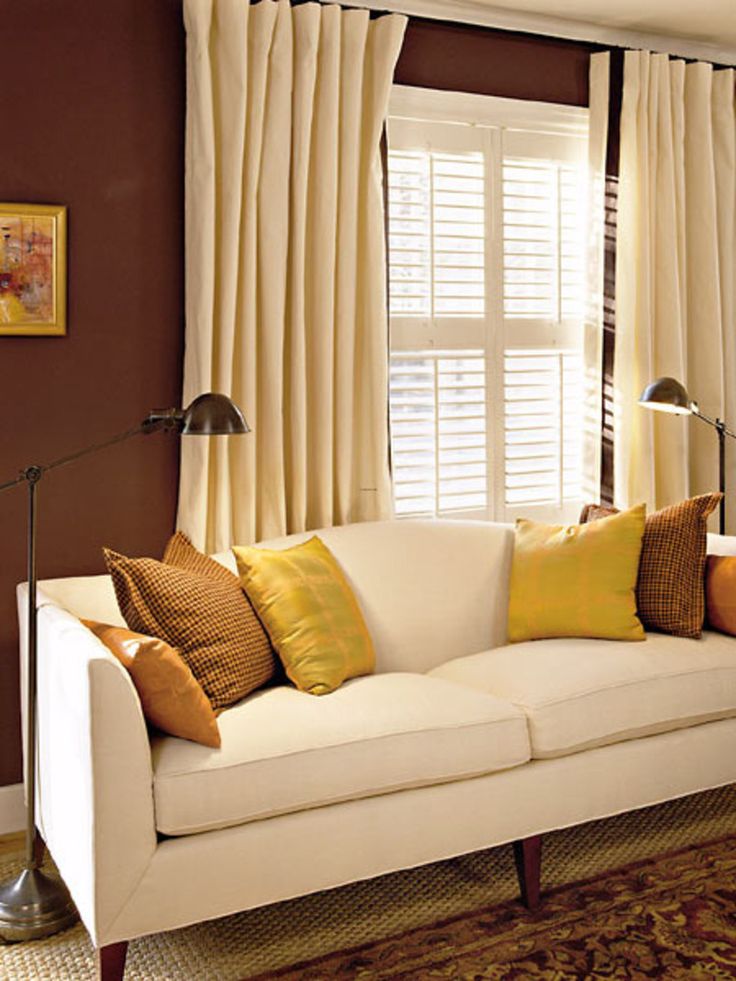Ideas for decluttering your home
How to Declutter Your Home: 10 Creative Decluttering Tips
Last updated:
“People rarely succeed unless they have fun in what they are doing.” —Dale Carnegie
The idea of living a simple life with less stuff sounds attractive to many.
But often, they begin to feel overwhelmed, anxious, and defeated around the idea of owning less. That’s too bad.
Learning how to declutter your home and (and as a result, decluttering your life) doesn’t need to be as painful as some make it out to be. And the benefits are numerous.
The Benefits of Decluttering Your Life
There are many benefits to owning fewer possessions. Even then, it’s tough to move into action. That is… until the many benefits of getting rid of clutter reveal themselves:
Less to clean. Cleaning is already enough of a chore, but having to clean around things you have zero emotional attachment to (or worse, actively dislike) makes cleaning the house much more stressful.
Less to organize. Finding things suddenly become easier. Things don’t just “disappear” anymore. You can actually move around your home and enjoy the space, instead of moving around things that are in the way.
Less stress. Looking around at the clutter is a nausea-inducing sight once your home becomes cluttered enough. Wouldn’t it be nice to be able to look around and see a home you love?
Less debt. Spending less time shopping for material possessions and adding to the clutter means your wallet and bank accounts remain fuller, your credit cards’ statements are lower, and your home doesn’t get filled with costly things you don’t need.
More financial freedom. Most American households live paycheck to paycheck (59% according to a recent survey done by Charles Schwab back in May 2019.) Nearly half of those surveyed carry credit card debt. Decluttering, paired with minimalism, will help you build up savings to keep you protected in case of unexpected emergencies.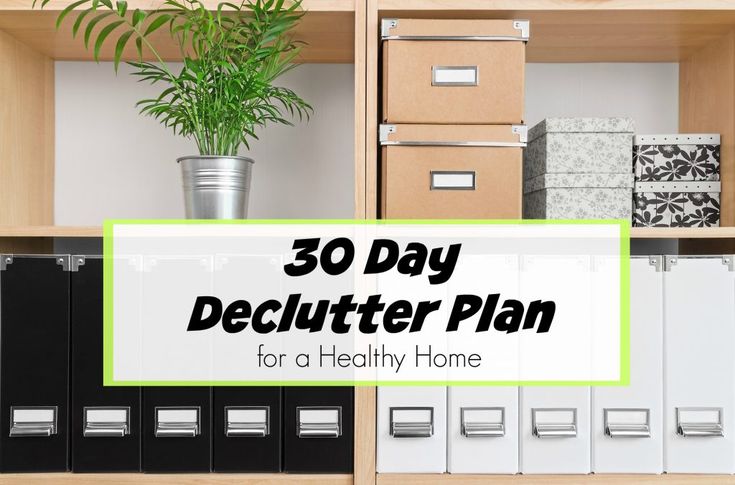
More energy for your greatest passions. With less debt, more financial freedom, and a clean home, you can now focus your energy on the things you enjoy instead of worrying about “Keeping up with the Joneses.” This will ultimately make you happier.
Ok, so now you know the benefits of decluttering your life, but you may be getting tripped up by the very next question… where in the world do you begin?
10 Creative Decluttering Tips
If you’re struggling and need guidance on how to declutter, you’ll need to get creative with your plans. Here are several interesting decluttering tips to get you started on decluttering your home:
- Start with 5 minutes at a time. If you’re new to decluttering, you can slowly build momentum with just five minutes a day.
- Give one item away each day. This would remove 365 items every single year from your home. If you increased this to 2 per day, you would have given away 730 items you no longer needed.
 Increase this number once it gets too easy.
Increase this number once it gets too easy. - Fill an entire trash bag. Get a trash bag and fill it as fast as you can with things you can donate at Goodwill.
- Donate clothes you never wear. To identify them, simply hang all your clothes with hangers in the reverse direction. After wearing an item, face the hanger in the correct direction. Discard the clothes you never touched after a few months.
- Create a decluttering checklist. It’s a lot easier to declutter when you have a visual representation of where you need to get started. You can use our decluttering checklist.
- Take the 12-12-12 challenge. Locate 12 items to throw away, 12 to donate, and 12 to be returned to their proper home.
- View your home as a first-time visitor. It’s easy to “forget” what your home looks like to a new visitor. Enter your home as if you’re visiting the home of a friend. Write down your first impression on how clean and organized the home is and make changes.
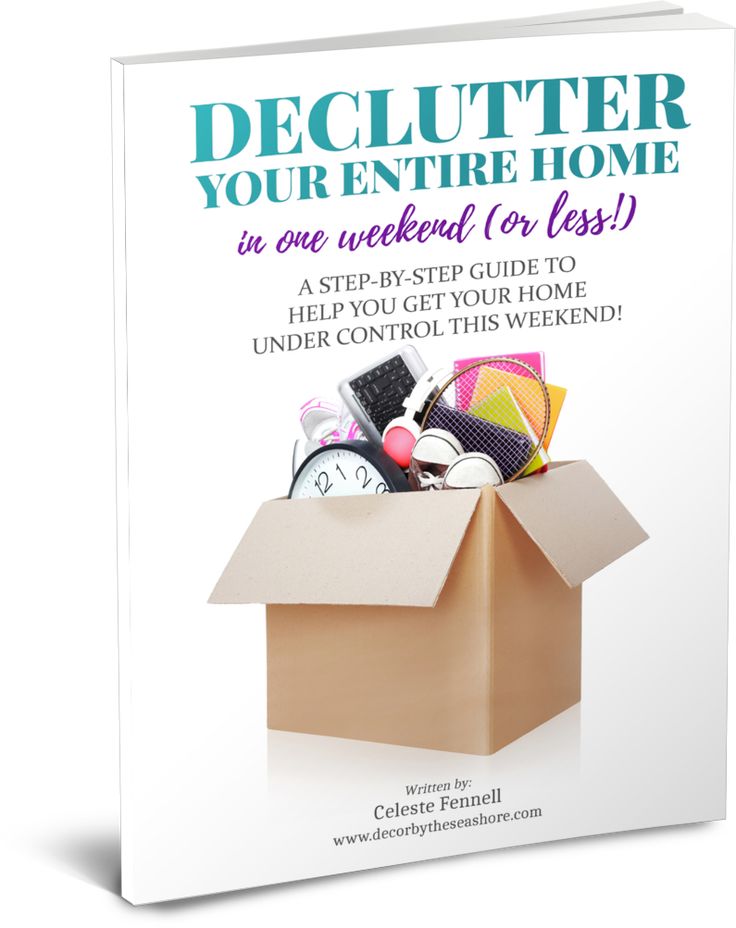
- Take before and after photos of a small area. Choose one part of your home, like your kitchen counter, and take a photo of a small area. Quickly clean off the items in the photo and take an after photo. Once you see how your home could look, it becomes easier to start decluttering more of your home.
- Get help from a friend. Have a friend or family member go through your home and suggest a handful of big items to throw away or give to someone else. If you defend the item and want to keep it, your friend has to agree with your reason. If they don’t agree, it’s time to get rid of it.
- Use the Four-Box Method. Get four boxes and label them: trash, give away, keep, or re-locate. Enter any room in your home and place each item into one of the following boxes. Don’t skip a single item, no matter how insignificant you may think it is. This may take days, weeks, or months, but it will help you see how many items you really own and you’ll know exactly what to do with each item.

No matter which decluttering tip you choose to get started – whether it be one of these ten or one of countless others – the goal is to take your first step in decluttering your life with excitement behind it.
There is a beautiful world of freedom and fresh breath hiding behind that clutter. Deciding how to declutter your home is up to you.
For more decluttering tips, watch this short video we put together. In it, I provide 10 quick decluttering projects, each completable in just 5 minutes or less:
***
How do I create a decluttering checklist?
Creating a checklist is one of the easiest ways to keep track of what can and still needs to be reduced from your home. We’ve put together a Declutter Your Home Checklist you can use to instantly make a noticeable difference.
Just pick any 5-10 items from the list to start and you will be amazed with how quickly momentum builds up.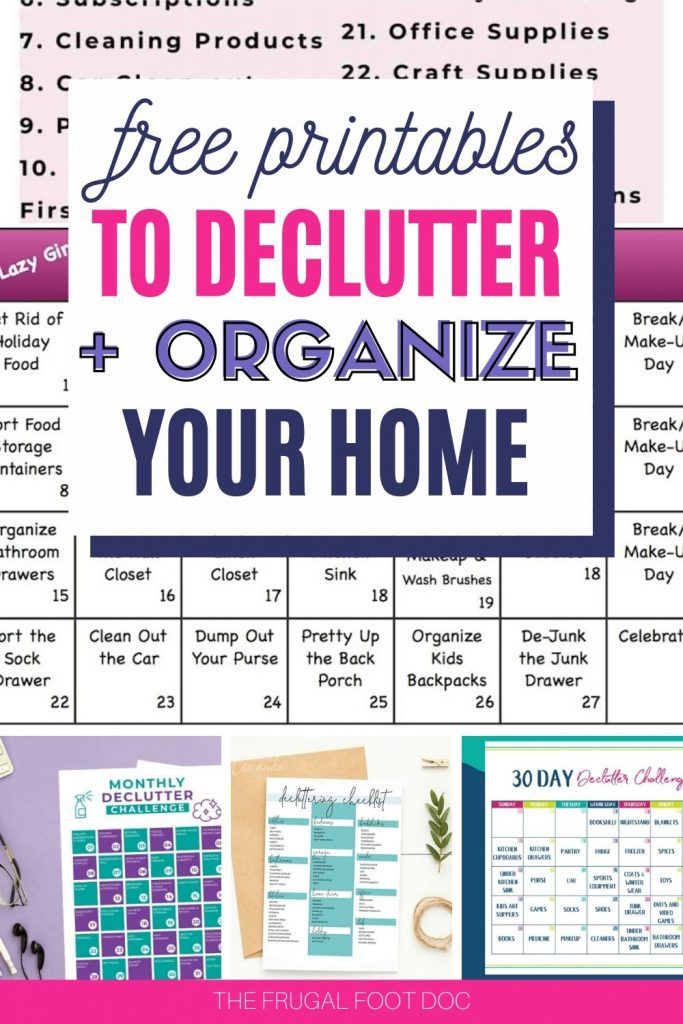
Do I need a professional organizer to help me get rid of clutter?
Absolutely not. Getting rid of the clutter in your home can be done by yourself. It can even be a fun family activity when using the decluttering tips found in this article.
How can I declutter quickly? Can it be done in a day?
Removing clutter from our homes and our lives doesn’t need to be rushed or done in a single day. It’s something that can be done over time and may even need to be done on a semi-regular basis. As long as you start the process today, you’re further along than you were yesterday.
Will owning less make my home look empty or boring?
Simple doesn’t mean sparse or boring. The opposite is true. With fewer mess and distractions, your home can become more peaceful. You can view your home as a space for rest and comfort, instead of a source of stress.
What’s the difference between declutter and unclutter?
They’re both interchangeable, though I prefer using “declutter. ” The “de-” hints at being complete and permanent. I like to think of decluttering as something that solves the problem forever.
” The “de-” hints at being complete and permanent. I like to think of decluttering as something that solves the problem forever.
When should I declutter?
This is a personal question. When you find yourself overwhelmed by your possessions and tied down, it usually means you’re ready to start making a change. Note that this feeling is just a broad litmus test. The feeling of overwhelm can be different for everyone.
How to Declutter Your Home: 6 Best Room-by-Room Methods
Set the overwhelming feeling aside by starting with small steps
By
Elizabeth Larkin
Elizabeth Larkin
Elizabeth Larkin is a professional organizer with a strong interest in productivity, time management, and process refinement. She used her organizational skills and effectiveness to pen articles with helpful information on cleaning, organizing living spaces, and decluttering.
Learn more about The Spruce's Editorial Process
Updated on 09/27/22
Reviewed by
Katherine Picott
Reviewed by Katherine Picott
Katherine is a professional home organizer, certified KonMari consultant, and member of The Spruce's Cleaning and Organizing Review Board.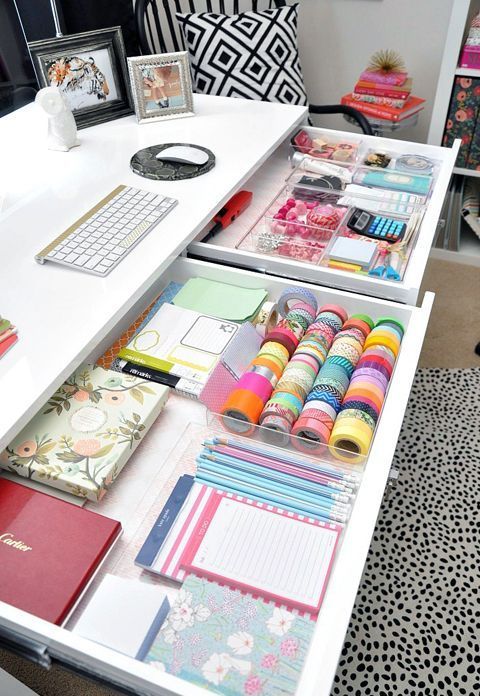 She launched her own professional organizing business, Tidy Milso, in the summer of 2020, to help reorient those feeling overwhelmed with both clutter and disorganization in their homes.
She launched her own professional organizing business, Tidy Milso, in the summer of 2020, to help reorient those feeling overwhelmed with both clutter and disorganization in their homes.
Learn more about The Spruce's Review Board
The Spruce / Letícia Almeida
Whether you're downsizing or just trying to simplify your life, figuring out how to declutter your home is a big job. The best way to start decluttering when you're overwhelmed is to do it in stages. Make a "declutter your home checklist" to prioritize clutter areas. Focus on one room, or even one zone within a room (e.g., kitchen cabinets), at a time. And complete each job fully before moving on to the next space.
Before you start to declutter your home, have containers defined for the following purposes to sort items:
- Put away: Items that have crept out of their designated storage spaces
- Fix/mend: Items that need something before they're put away, such as a shirt with a missing button
- Recycle: Items that can be recycled
- Trash: Items to throw away in the household trash
- Donate: Unwanted items that are still in good condition and can be donated to a charitable organization or another person
Here's how to put these containers to use while decluttering each room in your home.
Click Play to Learn How to Get Rid of Stuff With These Pain-Free Strategies
Creating a Decluttering Timeline
If you don't have a lot of stuff, it might be possible to declutter your house in one day or on a weekend. Or you might want to create a longer timeline to declutter your house in 30 days, for example. You can also plan a decluttering schedule just for the weekends you have in a month if you wish.
Keep your goals realistic and attainable, so you can declutter your home without feeling overwhelmed. Break down the spaces you need to declutter, estimating how long each will take. And then organize that into your overall timeline. Give yourself some buffer time in case something doesn't go according to plan.
What you should not do when decluttering is pull out all of your stuff without a plan for how you're going to sort it. If you do that, you'll likely just waste time wading through all of your disorganized items. In addition, it's often best to clean first before you declutter, so your everyday items are tidy and out of the way.
Consider starting in a room or space with only a small amount of clutter. That way, you can get it done quickly and feel like you're making progress on your overall decluttering timeline, which should in turn motivate you to keep going.
-
01 of 06
The Bathroom
The Spruce / Erica Lang
Start with your medicine cabinet. Take everything out, and discard outdated medications, makeup, and skincare products. Put everything you're keeping immediately back into the cabinet, storing the items you use most often at eye level.
Next, move onto any cabinet drawers. Remove everything, and do a quick evaluation of what you're keeping and what you're tossing.
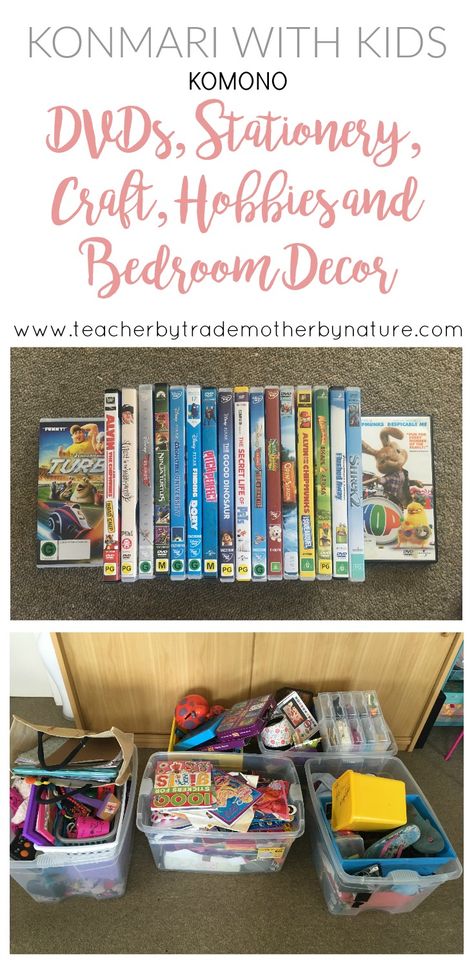 Put the items you're going to keep back into their drawers, with the items you use most often in the top drawers.
Put the items you're going to keep back into their drawers, with the items you use most often in the top drawers. Now, do the same routine with your shower/tub. Finally, pull everything out from below your bathroom sink, and declutter the items there.
Lastly, everything that did not have a home can be quickly sorted into the five bins you have staged for the purpose.
10 Quick Tips to Organize and Declutter a Bathroom
-
02 of 06
The Bedroom
The Spruce / Letícia Almeida
First, make your bed. It's hard to feel any progress decluttering a bedroom while an unmade bed stares you in the face.
Start with your nightstands. Remove anything on them that doesn’t belong there, and put it in your put-away bin. This may include books you’ve already finished reading, pens and paper, and mail. Throw out or recycle anything that you no longer use, such as empty tissue boxes, pens that have gone dry, or chargers that no longer work.
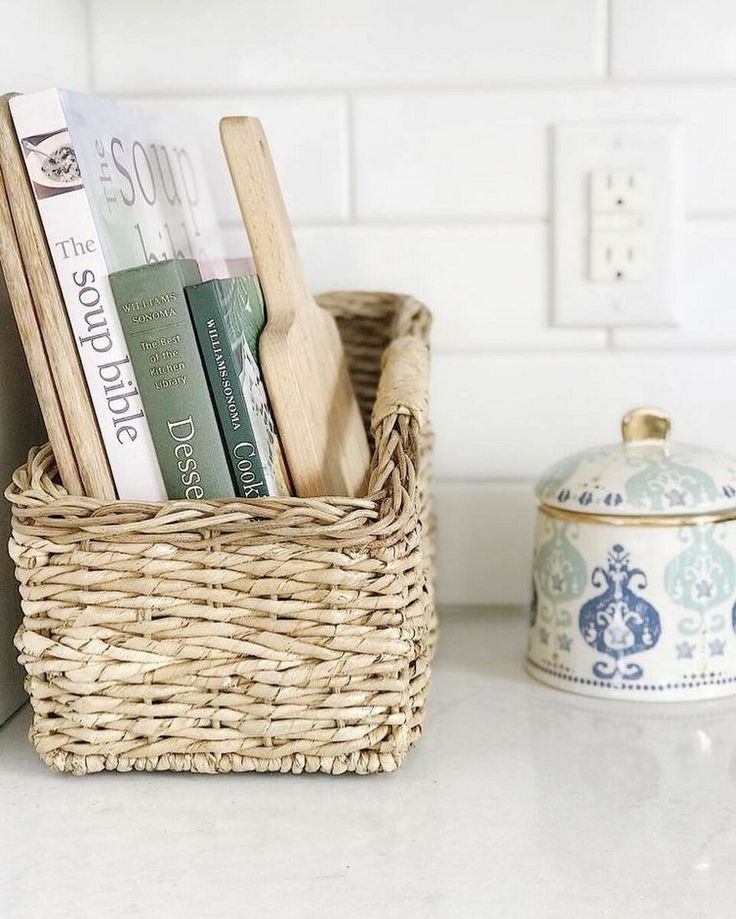
Do the same with the tops of your dressers, chests, and/or bureaus. Pay careful attention to any clothing that is strewn about. Anything that needs folding or hanging goes into the put-away bin. If you're afraid it may wrinkle further, you can lay clothes on your bed.
Go through each bureau, drawer by drawer. Take everything out. Pull out anything that is no longer worn, and put it in your donation bin. Fold and store the clothing you're keeping.
If you keep a desk or vanity table in your bedroom, tackle that next. Resist the urge to shove things back into drawers; instead, put them in your put-away bin. Toss or recycle any garbage or anything you haven’t used in more than six months.
Return items to their proper places. Fold or hang and store any clothing. If you're now eyeing your closet, we'll tackle that next.
9 Bedroom Organizing Tips to Use Right Now
-
03 of 06
Closet and Clothing
The Spruce / Letícia Almeida
OK, deep breath.
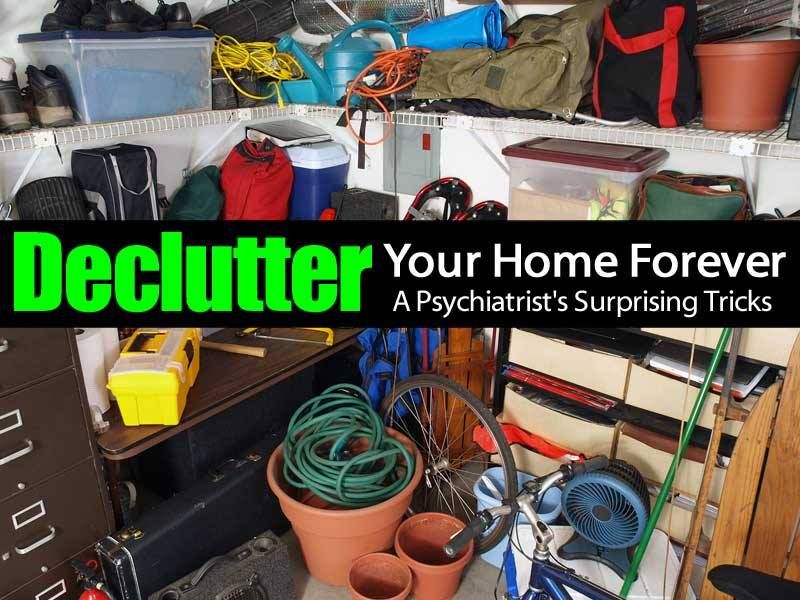 It's time to declutter your closet. The easiest way to tackle a closet is to first declutter your clothing by type. That means start with shoes, then boots, then dresses, then denim, etc.
It's time to declutter your closet. The easiest way to tackle a closet is to first declutter your clothing by type. That means start with shoes, then boots, then dresses, then denim, etc. It’s much easier to decide to toss or keep a pair of jeans if you’re looking at your entire jeans collection at once. So start pulling out different types of clothing, and decide what you'll toss and keep.
Once you’ve gone through each type of clothing, you will have four piles to deal with:
- Put away anything that was simply in the wrong spot. Example: If you had a pair of socks in your closet, put them in your dresser.
- Put any dirty laundry into the hamper, or bring it to the laundry room.
- Anything that needs to be repaired should go to the tailor or dry cleaner.
- To get rid of clothes, take them to a donation center or consignment store.
How to Declutter the Clothes in Your Closet
-
04 of 06
The Entryway, Mudroom, and Foyer
The Spruce / Christopher Lee Foto
You may not have a traditional mudroom or foyer, but you definitely have an entryway.
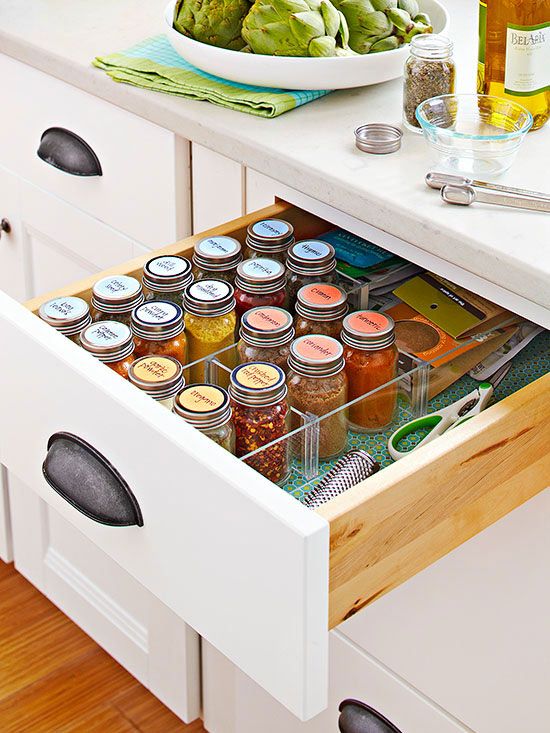 No matter how small it is, the best way to make an entryway most functional is to declutter it regularly.
No matter how small it is, the best way to make an entryway most functional is to declutter it regularly. Start with any desk, console, or side tables you have in your entry. Go through each drawer, removing the contents, and make a quick decision to toss or keep each item. Go over the tops of each desk or console as well. Do you have a space for your keys and other important items? Make sure everything is accessible and not too crowded. This will make it easier to leave the house with what you need each morning.
The hall closet should be decluttered like any other closet: Start with shoes and boots, then jackets, followed by accessories.
The entry is another area that picks up a lot of clutter from other rooms. Spend time putting away things from other rooms that have made their way to the entry.
7 Essential Design Elements for a Stylish and Organized Entryway
-
05 of 06
The Kitchen
The Spruce / Letícia Almeida
Keeping your kitchen clutter-free can be a challenge because so many different activities occur there—cooking, eating, and socializing.
 As a result, the kitchen has many different types of items stored in it. You can choose to declutter your kitchen by focusing on one category of item at a time (cutting boards, glassware, utensils, or bakeware, for example) or going by zone through each part of the kitchen.
As a result, the kitchen has many different types of items stored in it. You can choose to declutter your kitchen by focusing on one category of item at a time (cutting boards, glassware, utensils, or bakeware, for example) or going by zone through each part of the kitchen. The first step is to completely empty each space, assess each item, and put everything back where it belongs. Start with your powerhouse storage spaces first, such as the pantry and upper cabinets. Then move onto the lower cabinets, drawers, and the space under the kitchen sink.
The 11 Best Under-Sink Organizers of 2023
Finally, concentrate on your countertops. Move as many items as possible off of the countertops and into storage spaces. Keep only what you use every single day on the countertops.
Finally, take your put-away bin, and return anything that doesn't belong in the kitchen to its rightful storage space elsewhere in the house.
8 Ways to Declutter a Small Kitchen
-
06 of 06
The Living Room
The Spruce / Letícia Almeida
The living room is one of the hardest rooms in your home to keep neat on a daily basis.
 That's because it gets a lot of use, and living rooms don't usually offer a lot of storage features. You may have some bookcases and a TV console, but they don’t hide much. The key is to:
That's because it gets a lot of use, and living rooms don't usually offer a lot of storage features. You may have some bookcases and a TV console, but they don’t hide much. The key is to: - Decide on permanent storage spaces for commonly used items, such as remote controls, magazines, and books.
- Declutter this space regularly.
Start with bookcases, console, and side tables. Then move on to your coffee table and entertainment center. Empty them, assess the items they store, and then return them to their proper storage spaces. Put books away; reduce paper clutter, such as mail; return remote controls to their proper places; fold blankets; etc.
Move on to electronics. Remove everything that is not connected to your television or home theater system. Are you using it? Does it work? Store items such as chargers and gaming equipment where you use them.
Finally, tackle the toys. Assess every toy for wear and tear. Does it still function? Do your kids still play with it? Recycle or store each toy.

Grab your put-away bin, and return everything that belongs in another room to its proper storage space.
How to Organize a Living Room
Where to Dispose of Clutter
For the items you aren’t keeping when you declutter your home, you have some options regarding how to dispose of them. This is where it can be extremely helpful if you’ve already sorted appropriate items into recycle, trash, and donate bins.
Make sure you are aware of your local recycling guidelines, as certain items, such as electronics, often can’t go in the regular recycling. Keep a separate bin for those items to bring them to an appropriate recycling center. Moreover, if you know you’ll be undertaking a major decluttering project, you might want to rent a dumpster in advance for unusable items that must be thrown away.
Remember that items in good condition can be donated or sold. Besides a donation bin, you also might want to start a collection of items to sell in a garage sale. Furthermore, if you plan to give away certain items to friends and family, it can be helpful to start bins for each person to fill as you declutter.
Furthermore, if you plan to give away certain items to friends and family, it can be helpful to start bins for each person to fill as you declutter.
Watch Now: 8 Easy Things to Get Rid of Now to Declutter Your Home
Innovative cleaning method - INMYROOM
Do you view your home only through the prism of functionality? Divide it into a series of rooms where you eat, sleep, wash, work, communicate with household members? Think broader: the house is the center of your unique life, which requires order in all areas. We read a new book about cleaning to learn how to start living more consciously and stop cluttering the environment. We share our impressions with you.
The book “Breathe Freely” was published in Russian by the publishing house “Mann, Ivanov and Ferber” in 2015. Its authors - Lauren Rosenfield and Melva Green - wrote it for those who want to get rid of the clutter in their home and soul. Dr. Melva Green is a registered psychiatrist who combines scientific knowledge with the power of intuition. Lauren Rosenfield is the mother of four restless teenagers and a master of spiritual cleansing. nine0003
Lauren Rosenfield is the mother of four restless teenagers and a master of spiritual cleansing. nine0003
1. Start cleaning in the entryway
The entryway is the first place you enter when you come home. Therefore, restoring order should begin with it. Enter your home as if you were a first-time visitor. What immediately catches your eye? What things seem redundant? Remove them without hesitation - give them to someone or throw them away.
Fill your entryway with just the right things and nice accessories. Put a vase with fresh flowers on a chest of drawers, hang a cheerful picture and a poster. Keep everything in its place, and throw out flyers, checks and other garbage before you get home. nine0003
"Before you start getting rid of stuff, it's important to remember that the process of getting rid of stuff requires patience, pliability, and sensitive introspection."
2. Create an atmosphere of relaxation in the living room
The living room is a place for the whole family to gather: here we share the day's events, impressions, spend time with children and receive guests. Someone has a whole room allocated for these purposes, for someone it also serves as a bedroom. One thing unites them - the mess prevents you from completely relaxing and relaxing. nine0003
Someone has a whole room allocated for these purposes, for someone it also serves as a bedroom. One thing unites them - the mess prevents you from completely relaxing and relaxing. nine0003
Take a picture of the interior of your living room, look at the photo and think about what is bothering you. Perhaps a pile of unnecessary magazines has accumulated in the corner, flyers lie between the books, and clothes hang on the back of the chair - remove unnecessary things. Do the manipulations several times and the only thing left for you is to invite guests here.
"Physical rubbish is just an expression of the emotional disorder we carry within us."
3. Set up a place for home dinners
The dining room is more than a room where people just eat: here people communicate and exchange news. It doesn’t matter if you can allocate a full-fledged room for it or have dinner at a small table in the kitchen - there should be order in this area. Often in the dining room they work at a computer, do their homework - they use it as a full-fledged workplace.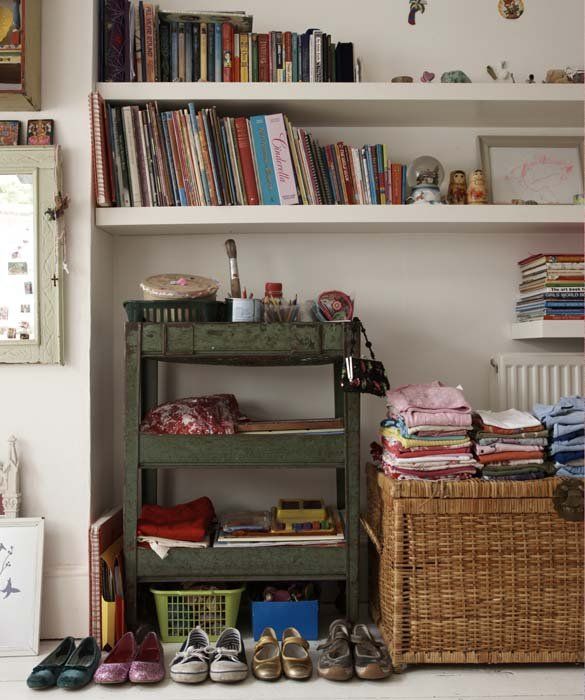 Therefore, meals become more like a quick snack in the company of a laptop or TV.
Therefore, meals become more like a quick snack in the company of a laptop or TV.
As you clean this area, write down a list of things you do here: school lessons, office work, needlework. Allocate a box for each activity: put extra things in them and put them out of sight - let nothing distract you while eating. nine0003
“You will have to look at rooms not just as a place for furniture, but as an outward manifestation of emotional and spiritual life. For each room, choose at least three symbol words that describe the atmosphere you want to create there.
4. Free the kitchen from unnecessary things
The kitchen is often called the heart of the house - it is here that the hostess prepares food for the family, guests first come here for a cup of tea. In addition to groceries, it stores dishes, cooking utensils, cookbooks and more. But are they all in their places, do you use at least half of the things? nine0003
Get rid of pieces of furniture that prevent you from moving freely around the kitchen and making the most of the space.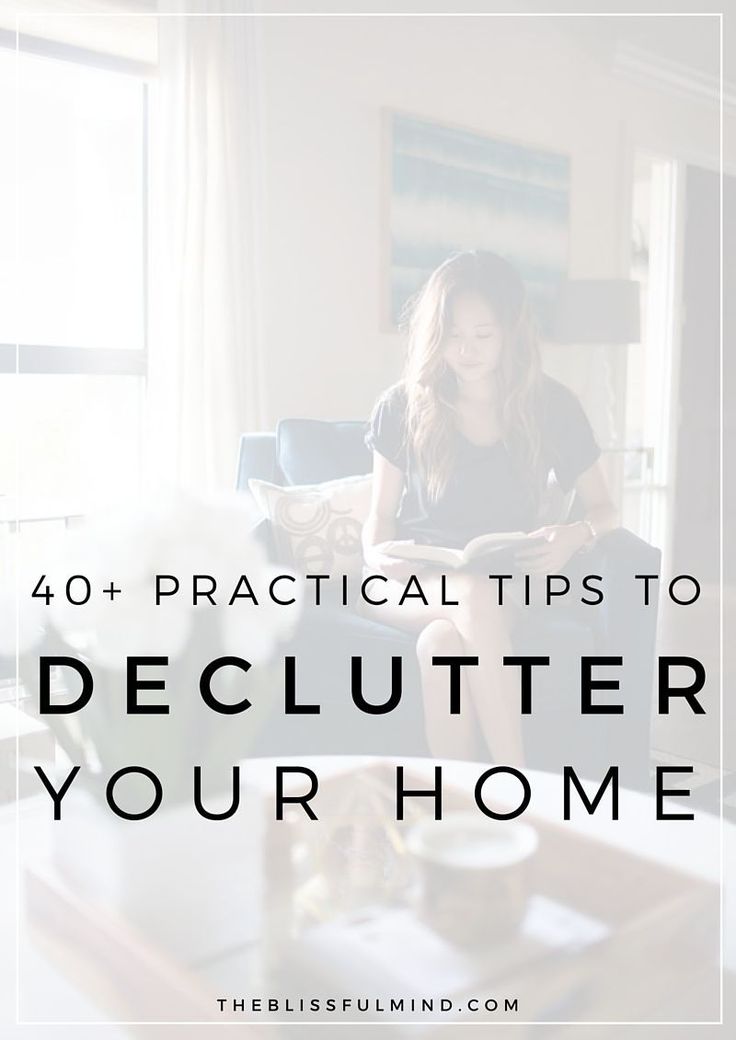 Grab your favorite cookbook and plan your dream dinner. Pull out all the tools you need to prepare such a dinner: pots, pans, bowls. Repeat the manipulations with different menu options: everything that is left aside - feel free to throw it away. And, of course, do not wait for a special moment - cook your dream dinner now!
Grab your favorite cookbook and plan your dream dinner. Pull out all the tools you need to prepare such a dinner: pots, pans, bowls. Repeat the manipulations with different menu options: everything that is left aside - feel free to throw it away. And, of course, do not wait for a special moment - cook your dream dinner now!
"Getting rid of rubbish - giving up unnecessary things in order to get in return the space, time and positive emotions that you lack." nine0007
5. Teach your child to clean by example
While the child is still small, you are responsible for the order in the nursery. But the kids grow and change, the nursery transforms with them - it is filled with toys, personal items and hobby attributes. Remember that children do not see the disorder - for them it is a natural result of development and self-knowledge.
The best way to teach a child to put things in order is not to ask him, but to show how this is done by your own example. Give him one small task at a time: sort out one drawer, throw out old clothes, put away toys. And of course, do not forget about promotions. nine0003
And of course, do not forget about promotions. nine0003
"The goal is to enjoy the process and feel the joy of the work done."
6. Get rid of distractions in the office
Some people like to work in open common areas: at the dining table, at the coffee table by the sofa, in the bedroom; others choose a secluded spot next to a window. Both of them are similar in one thing - the workspace easily turns into a real pile of rubbish.
Psychologists say that this is connected with a feeling of anxiety and fear of responsible work. To clean up your office, first sort the things that you are indifferent to, then those that cause fear or stupor. As a result, you will not only clean up the space, but also understand what type of activity to pay special attention to. nine0003
“Always start by identifying a purpose for the room or area you have chosen to clean up. You have to look for things that are inappropriate for the purpose: they will go into the box.
7.
 Make room for relaxation in the bedroom
Make room for relaxation in the bedroom The bedroom is a personal space in which we are especially vulnerable. The bedroom is a place of love, rest and recovery, and any clutter will get in the way of complete relaxation. Take a close look at the room, pay attention to which of the things cause pleasant emotions, and what you would like to replace. If you need to, feel free to toss out extra accessories and highlight what you like. nine0003
“We are big fans of before and after shots. It's nice to see where you've been before to realize how far you've come."
8. Take time to keep your bathroom clean
The bathroom is where every morning begins and every evening ends. It is here that we can be alone with ourselves, smile at the reflection and tune in to a new day. It is difficult to do this among unwashed linen, chaotic shampoo bottles and a dirty sink.
Get rid of all the things that spoil your start to the day and cause discomfort. Sort the bottles and jars - are you sure you need them all? Feel free to throw away those that are already covered with dust - love yourself.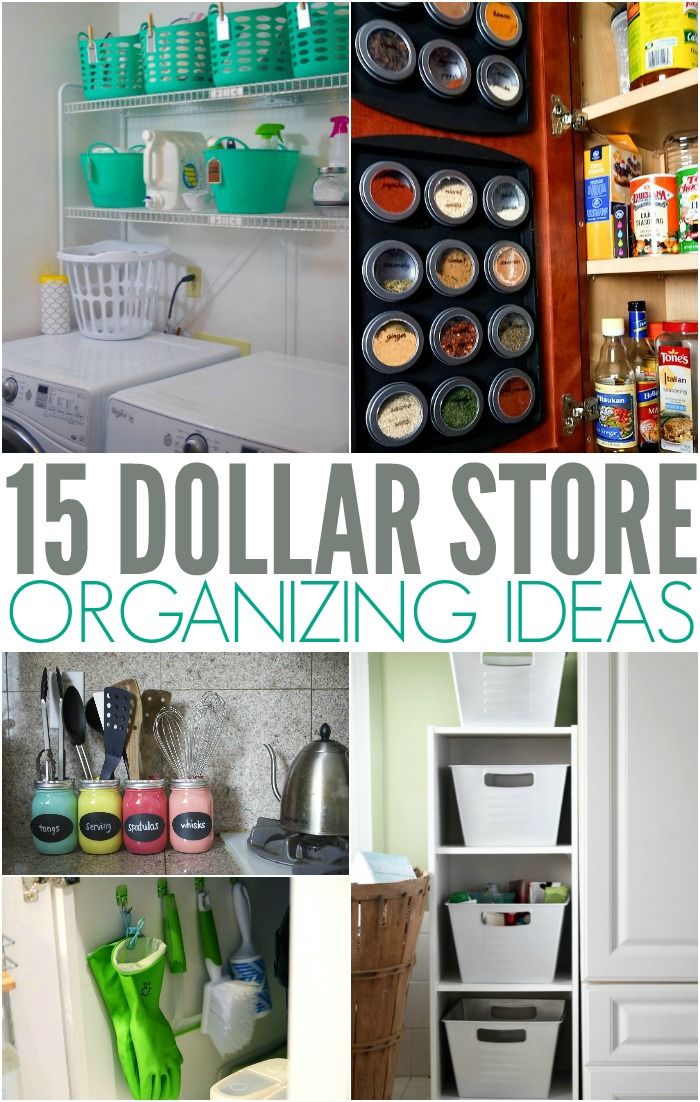 nine0003
nine0003
“The idea of three gates is good to use when cleaning the house. We suggest the following control questions: Does this item meet my goals? do I use this item? Is this thing good for my soul?
Opinion InMyRoom
If you have never traced the connection between your emotional state and order in the house, then this book can be a real discovery for you. It does not contain practical advice on how to wash a stain or hang up blouses, but you will get acquainted with popular exercises for introspection and self-acceptance. In fact, doing them is often more effective than daily dusting. nine0003
37 tips and ideas on how to clean up anywhere
You can listen to the article. If it's more convenient for you, turn on the podcast.
Competent organization of space is priceless. It makes the house more spacious, allows you to do less cleaning and even helps to maintain order in life. There is only one problem - learning such an organization is not as easy as it seems. Here are some tips and ideas on how to do it.
Here are some tips and ideas on how to do it.
1. Correctly define what garbage is
We spend a lot of time at home and quickly get used to the things we see all the time. We no longer notice the pile of papers that grows on the table day after day, or the clothes that lie in the armchair for a week. This is becoming the norm. We understand that something is wrong only when we can’t find what we need or we buy a new thing, and then we find a similar sweater under the bed.
Space experts advise taking pictures. Take pictures of your desk drawers, closet shelves, and other cluttered areas, then zoom in on the photos. Do you use all the things you see? How often? Do you want to tidy up and put things away? The answers to these questions will help you understand that out of a pile of things - real garbage, which is high time to throw away. nine0003
2. Come to terms with the fact that garbage has always been, is and will be
Perhaps you now think that there is nothing unnecessary in your house. And no trash either. But such things certainly exist, and this is absolutely normal.
And no trash either. But such things certainly exist, and this is absolutely normal.
Life throws us more and more new objects every day. We can buy an unusual figurine, and after a week ask ourselves why we did it. You will always have to get rid of garbage, which means you need to figure out how to make this process interesting and exciting. For example, turn on peppy music while cleaning or divide unnecessary into categories. nine0003
3. Do not get attached to things
In today's world, the value of owning anything is too exaggerated. We often think that we can only enjoy a thing if we buy it.
In fact, it is enough to rent some items for a while to understand that we do not need them so much. For example, if you have been dreaming about a coffee machine for a long time, borrow it from a friend for a week. You may not use the device as often as you thought.
In addition, for everything that we already have, it is necessary to allocate space and keep it clean and tidy. It takes energy and strength. Therefore, it is worth surrounding yourself with only the most necessary and favorite items. nine0003
It takes energy and strength. Therefore, it is worth surrounding yourself with only the most necessary and favorite items. nine0003
4. Include children in cleaning
It is better to allocate time for cleaning the nursery every day. At the same time, experts advise not to say phrases like "Get out." Children perceive them as “putting beauty in the room”, so they simply diligently shove things into the nearest lockers.
Instead, explain that each toy or book has its place, and cleaning means putting them in those places. Also try to teach your children to clean up the room at certain times, such as before dinner. nine0003
5. Sort papers and stationery wisely
Experts say it's best to sort and file paper vertically rather than horizontally. Even if you rarely work with documents and write down something, select a drawer or shelf for papers. Sort them into files every week using categories and subcategories. And don't put important documents too far away.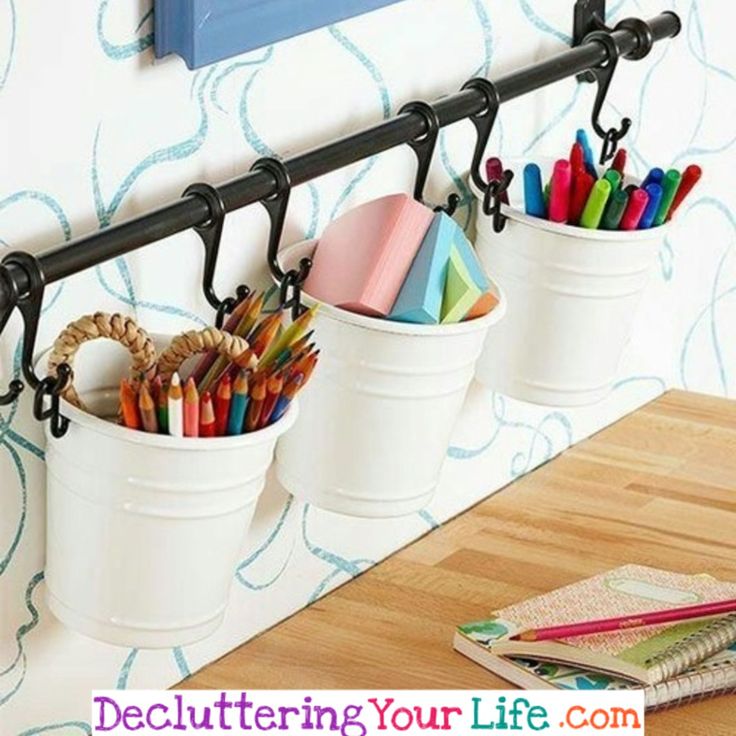
If you have space to work at home, try to separate the work area from the storage area. Most often, we buy stationery sets, such as 20 pens or several packs of stickers. Don't keep it all on the table. Put the supplies in the closet, leaving one or two handles. When they run out, you just get new ones. nine0003
6. Put away things immediately
When we hold a cup in our hands, it is easy for us to convince ourselves to leave it on the bedroom table. Well, what, because you still have to go to the kitchen, and you can remove the cup later. As a result, she stays by the bed until the evening, and even until the next morning. Try to avoid this and immediately put things in their places.
7. Be mindful of functionality
We often choose the visual component of the order, not the functional one. For example, when we sort out a closet full of clothes, we are more likely to want to arrange things in a way that looks beautiful, like on Instagram* blogs, and not so that it is easy to find what we need. Of course, this is the wrong approach. nine0003
Of course, this is the wrong approach. nine0003
The point of organizing a space is to satisfy our needs, not to put things in nice looking piles. If the “picture” is important to you, add nice tags, labels, or other identifying marks that will help you navigate the storage system without any problems.
8. Take your time
If you start transforming the entire apartment at once, interest and patience will quickly disappear. It is better to allocate half an hour every day, but do not skip cleaning. Organization of space is not an end point, but a continuous process of acquiring and applying new skills. nine0003
9. Organize mindfully
If you've just returned from the store with full shopping bags, take the time to unpack them right away. This will help reduce the amount of debris that would otherwise be left in the hallway, kitchen and other rooms.
10. Disassemble the wardrobe in three steps
The first is to remove all unused hangers. They can be given to friends or put aside in reserve. Then you need to choose the things that require washing. Finally, set a timer for 10 minutes, or whatever time you need, and quickly sort out your clothes, setting aside what you definitely won't be wearing. These things can be donated for recycling or for charity. nine0003
Then you need to choose the things that require washing. Finally, set a timer for 10 minutes, or whatever time you need, and quickly sort out your clothes, setting aside what you definitely won't be wearing. These things can be donated for recycling or for charity. nine0003
Take note 👕
- How often should you update your wardrobe and how to do it wisely
11. Determine a place for each item
Before you buy something, experts advise you to clearly imagine where you will put it. Each item should have its own little "home" and its own place. If you do not understand where you will "live" a thing, you should not bring it from the store. nine0003
12. Starting a difficult cleaning wisely
When we have a huge amount of things to sort out before our eyes, it is easy to panic. In order not to panic, first divide the cleaning into blocks, for example, by room: entrance hall, living room, kitchen, and so on. And then you can divide each room into zones.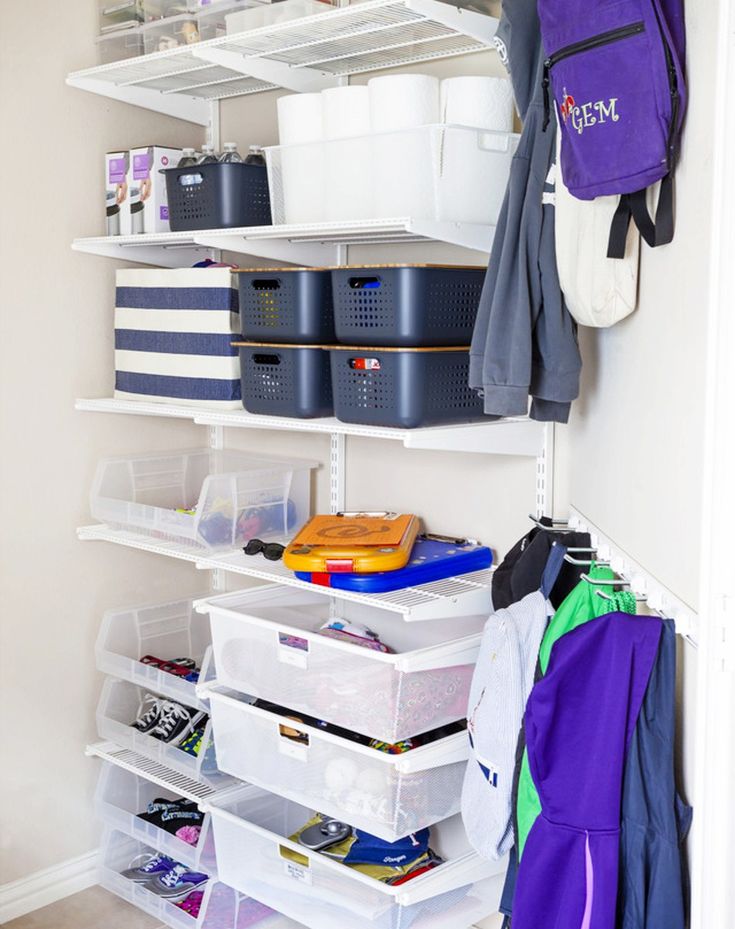
The most important thing is to force yourself to get down to business. As soon as you start taking things apart and finding something that you have long forgotten about, you will immediately feel inspired. You can also ask friends or family members for help. nine0003
13. Reduce the amount of things on the bedside table
Usually you can find glasses, hand cream, a charger, a book or a magazine on it. If you need something else, make your own list, but don't get too carried away. Often in the drawers of the bedside table, unnecessary trash and garbage collects.
To avoid this situation, keep certain things in each compartment. For example, store wet wipes and other personal care items in the top, and put the book you are reading or planning to read in the bottom. nine0003
14. Tidy up your desk
Keeping a notebook and a pen handy always helps to organize your thoughts or leave small reminders to yourself. Headphones - conventional or noise-canceling - let you turn off external sounds and focus.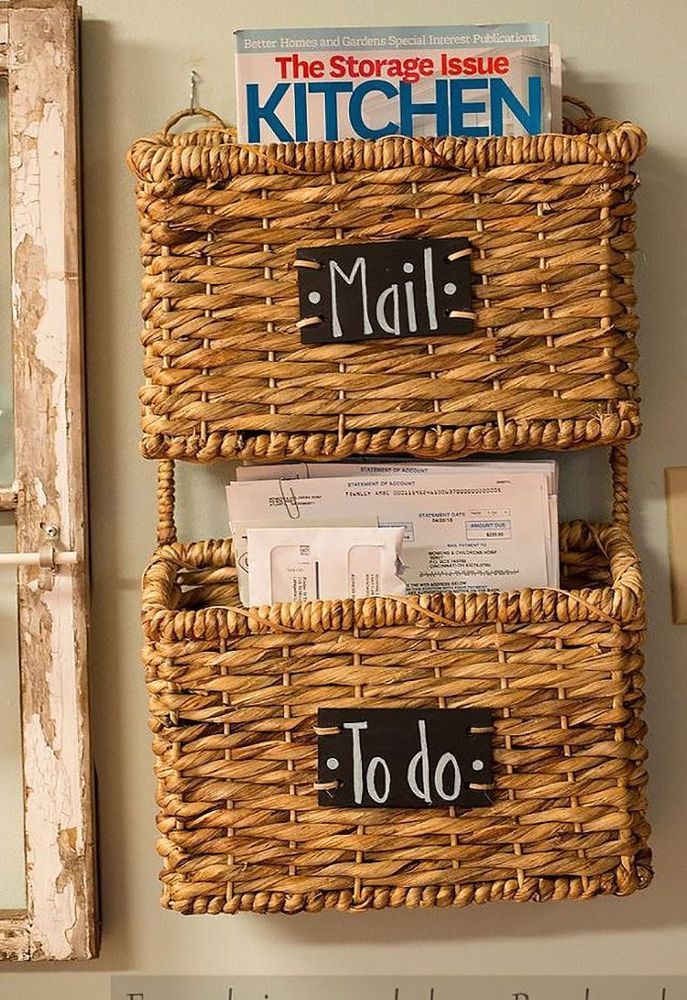 And according to the calendar on the table, it is convenient to compare and supplement the schedule.
And according to the calendar on the table, it is convenient to compare and supplement the schedule.
But do you really need colored pencils, old postcards or a few decorative figurines? If not, it's time to get them off your desktop. Use the same principle as with the bedside table - leave only the essentials. And do not forget to disassemble the drawers. nine0003
15. Pack smartly
First, make a list of things you need. It is better to save it on your computer or phone. A ready-made list will help you remember important things when packing for future trips.
Plan your wardrobe for every day of travel. Try to choose things that combine in different ways, and avoid clothes from the “what if” category. Usually it just takes up space, and you never take it out of the suitcase. You can also set a certain limit, for example, four sweaters, two pairs of jeans, and so on. This will allow you not to overdo it with extra outfits. nine0003
It is better to pack things in layers, the first of which is heavy, such as shoes, jeans or sweatshirts.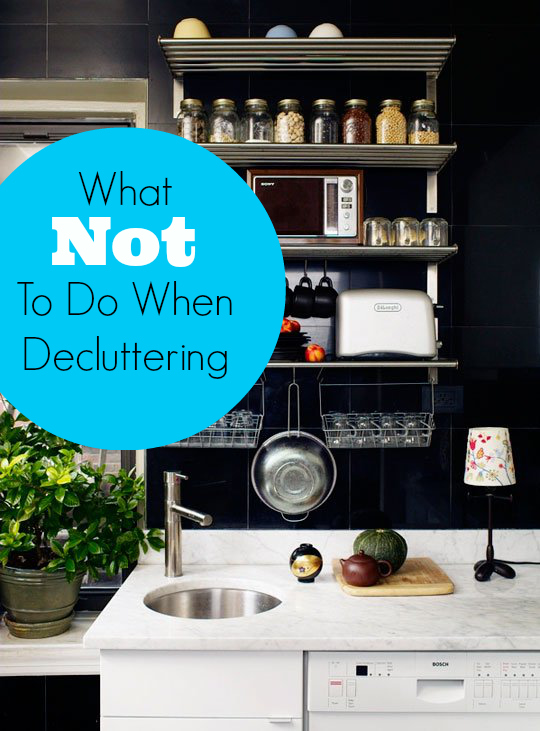 And so that the clothes do not wrinkle, you can shift them with paper napkins or towels. Small items, such as underwear or small electronics, are best packed in separate bags.
And so that the clothes do not wrinkle, you can shift them with paper napkins or towels. Small items, such as underwear or small electronics, are best packed in separate bags.
Experts recommend packing your suitcase the weekend before your trip. So you will feel calmer, besides, you will have enough time to buy something. nine0003
When the trip includes air travel, use the “fractional rule”: if your family has four people, put a quarter of each person's clothes in all suitcases. In case one of them gets lost, everyone will have something to wear until the luggage is found.
16. Read useful books
To learn how to maintain order in the house and life, experts advise reading literature not only on cleaning, but also, for example, on time management. You can start with David Allen's How to Get Things Done: The Art of Stress-Free Productivity and The Power of Habit. Why do we live and work this way and not otherwise?” Charles Duhigg. nine0003
17. Reduce the amount of paper
In today's world, almost all information is available online, which means there is no reason to keep useless papers.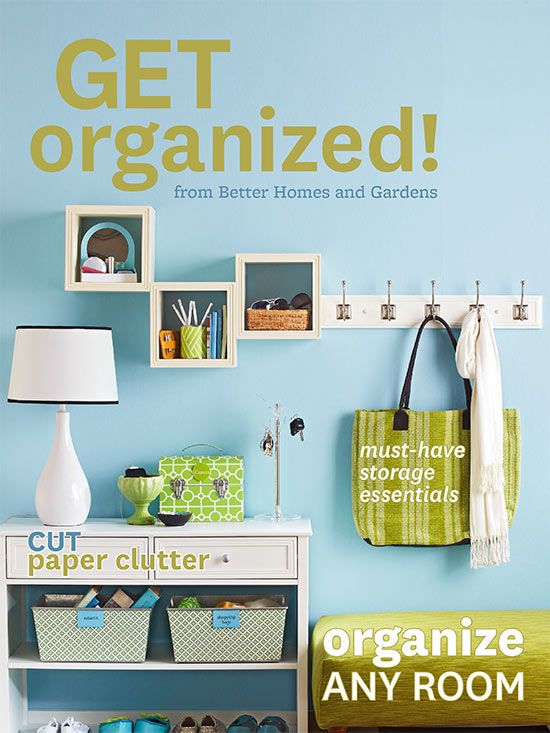 Get in the habit of immediately throwing away unnecessary leaflets, such as advertisements that are often put in the mailbox. Important and necessary documentation can be kept in files, but try to keep it to a minimum.
Get in the habit of immediately throwing away unnecessary leaflets, such as advertisements that are often put in the mailbox. Important and necessary documentation can be kept in files, but try to keep it to a minimum.
18. Keep track of memorabilia
Do not keep sentimental souvenirs around the house. Experts advise having a separate drawer or container for meaningful items - postcards, letters, and any other memorabilia. But it should also be kept in order. If you notice that the lid is already barely closing, think about what is really important to you and leave only the most valuable. nine0003
19. Avoid unnecessary surfaces
The more surfaces in the house, the more likely it is to fill them with unnecessary things and garbage. Experts urge to act radically and remove unnecessary pieces of furniture from the apartment as much as possible. Such minimalism will allow you to easily maintain order.
20. Optimize your wardrobe
If you see the back wall when you open your wardrobe, you are not using it to its full potential.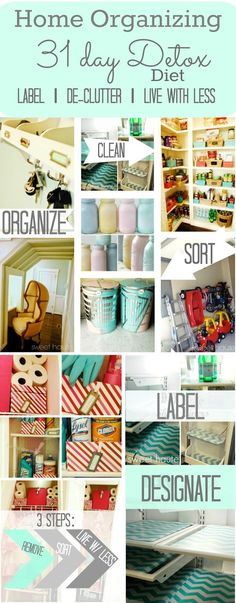 To get an idea of how much space you need, try separating your clothes first by style and then by color, and hang things in the direction from light to dark or vice versa. And if you have a large collection of hats or caps, don't put them on the shelves, but add stylish hooks to your wardrobe and hang your hats on them. nine0003
To get an idea of how much space you need, try separating your clothes first by style and then by color, and hang things in the direction from light to dark or vice versa. And if you have a large collection of hats or caps, don't put them on the shelves, but add stylish hooks to your wardrobe and hang your hats on them. nine0003
According to experts, 80% of the time we wear only 20% of our wardrobe. Find your 20% and give away the excess. You can even put a special bag for charity in each closet - this will reduce the time for sorting.
21. Pay attention to the bedroom
This is one of the most "tasty" places for garbage. Here we are drawn to leave a travel bag, which we will sort out a little later, throw things that are long overdue to be washed in a corner, or spread papers all over the room.
Review and remove everything from the bedroom that is not related to clothes, sleep, relaxation and romance. Beautiful flowers and candles do not count. The rest is better to remove to other rooms.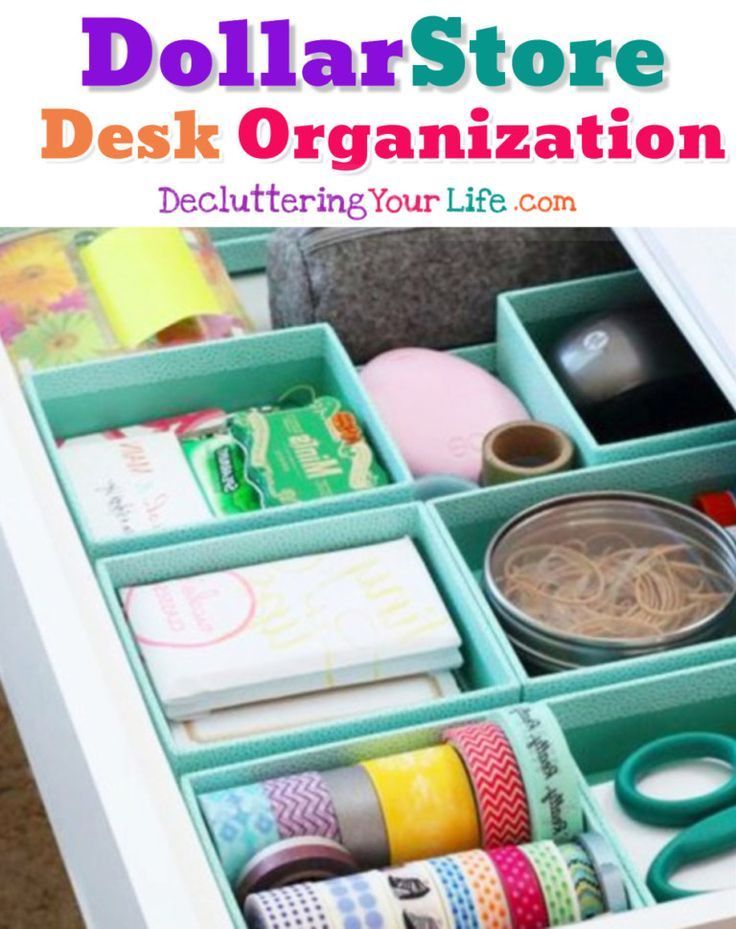
22. Use labels and stickers
Stickers, dividers and other "markers" are indispensable in the household. They make it much easier to find the right papers, products, things. Stickers can be attached to files with documents, drawers in the wardrobe and garage, or back walls of lockers, so you can immediately understand whether you will find what you are looking for there or not. nine0003
23. Be ruthless
Most of us have too many things. And all because we do not know how to “let go” and give them away. As a result, there are more and more objects, and there is almost no place left for us in our own home. Experts advise to be tough and carefully select things. Make a list of what you absolutely need and give or throw away the rest.
The same applies to the goods you plan to buy. Ask yourself if you really need them, if there is room for new things in the house and what you are willing to sacrifice to make room for them. If the answers are inconclusive, you should think again before making a purchase. nine0003
nine0003
24. Not scolding ourselves
As soon as we start cleaning, we often start scolding ourselves. “How did I bring (s) the apartment to such a state”, “What did I think (s)”, “I am a real slob” - these are more harmless remarks from those that we release in our address.
Do not forget that restoring and maintaining order is hard work. Focus on how you want your home to look like in the future, not on the mistakes you made in the past.
25. Change attitude to workspace
Any items that are needed for work should be at arm's length. Try to organize your workspace so that you can find everything you need for daily tasks. This will not only clean your desktop, but also increase your productivity.
26. Clean out the bathroom regularly
Every six months, check the expiration date of cosmetics and care products and throw away expired products. Organizers also help keep order. You can put medicines, hygiene and other accessories in them. nine0003
nine0003
27. Clean up immediately while cooking
Wash and put away dishes while lunch or dinner is still cooking, and return ingredients to their places immediately after use. The amount of cleaning after cooking will be significantly reduced.
Check 🍤
- 8 mistakes in organizing space in the kitchen that take up your time
28. Use glass food containers
Ordinary plastic containers are not always convenient. They are often cloudy, making it hard to see what's inside. Experts recommend taking glass containers and even putting them upside down in the refrigerator so you can see at a glance what they are filled with.
29. Keep wastebaskets in the right places
It is best to place them where waste is most likely to accumulate. For example, where you parse correspondence from the mailbox. Half of the papers usually have to be thrown away right away - a trash can nearby will not let you forget about it. nine0003
30.
 Attach more hooks
Attach more hooks Hanging clothes on them is much more convenient and faster than putting them away on a hanger in the wardrobe every time. Hang more hooks for yourself and for the kids so they can easily leave outerwear or backpacks in the right place, and not scattered all over the apartment.
31. Divide kitchen cupboards into zones
Experts propose to proceed according to the following scheme. First, take everything out of the cabinets and lay it on the table. Throw away or give away things that you definitely won't eat or use. nine0003
Then divide the cupboards into zones: ingredients for baking, spices for second courses, food supplies, kitchen utensils, dishcloths, dishes themselves, and so on. Thoroughly wipe the shelves and arrange everything in zones.
At the end, add stickers so that you don't forget what is where - at first it will be unusual for you, but gradually you will get used to it and understand how convenient it is.
32.
 Do one thing at a time
Do one thing at a time The modern world is crazy about multitasking. We try to do everything at once, and any delays and interruptions annoy us wildly. Try a different strategy - perform tasks one at a time and in order. nine0003
For example, if you open a program on a laptop and it's been loading for five minutes, you don't have to reach for your phone to take that time. Take a deep breath, exhale and just wait. This will bring peace of mind and help you do things better.
33. Trust in space
In order to keep things from filling up the house, it is important to decide in advance how much space you are willing to allocate for each item. For example, you will have only one drawer in your closet, in which you will put only sweaters. This means that you should not buy more sweaters than this box can hold. If you still bought a new thing, and the drawer is no longer closed, you will have to get rid of one of the old sweaters. You cannot move clothes to a new place.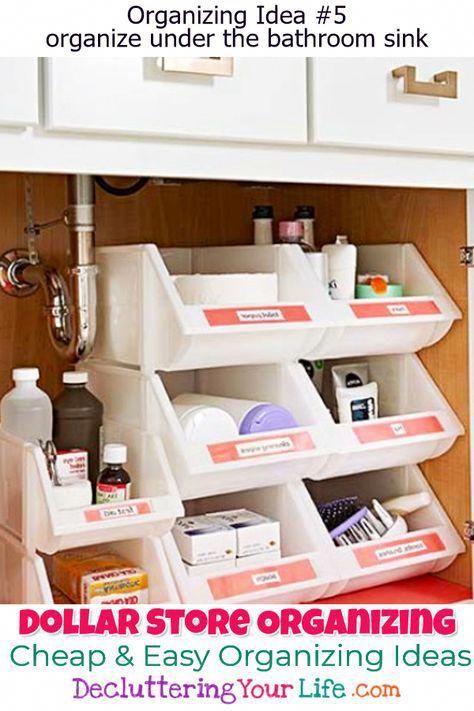 Such a strict selection principle will help keep the wardrobe in order. nine0003
Such a strict selection principle will help keep the wardrobe in order. nine0003
34. Increase vertical space
Experts suggest adding more shelves for books and decor, placing small baskets throughout the rooms for a variety of items, and even hanging things in the wardrobe on top of each other. This will help increase the vertical space in the apartment and make it a little more spacious.
35. Sort bags
Admit it, how often do you painfully long dig in your bag in the hope of finding the keys to the apartment, chewing gum or antiseptic? To prevent this from happening, try to "demarcate" things. Buy several small multi-colored zipper organizers and use for different items: one for cosmetics and hygiene items, the second for electronics, the third for other small items, such as a notebook and a pen. So you will always easily and quickly find any thing. nine0003
36. Move wisely
Keep a “moving diary” and enter everything you need into it: a list of things, tasks, contacts of companies involved in transportation, and any other information.